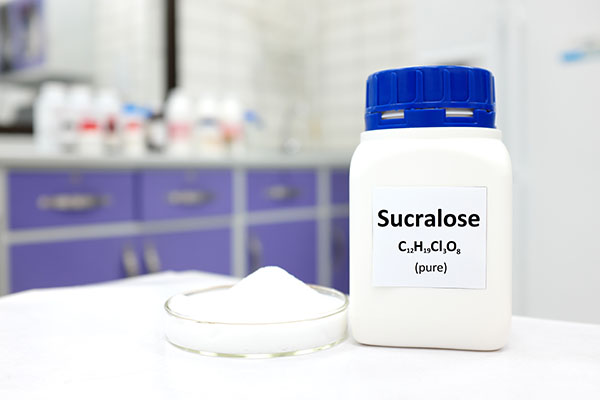Hidden toxins in your wardrobe: Study finds 303 chemicals leaching from everyday clothing
10/22/2025 / By Willow Tohi

- A 2025 study identified 303 hazardous chemicals in infant garments, including pesticides, flame retardants and hormone disruptors.
- These toxins migrate onto skin through sweat, friction and washing, posing risks to immune function, fertility and neurological health.
- Flame retardants like PBDEs accumulate in body fat, disrupt thyroid function, and are linked to cancer and developmental disorders.
- Synthetic fabrics (polyester, nylon) contain higher chemical loads than organic cotton, linen, or wool.
- Proactive steps: Wash new clothes repeatedly, choose GOTS-certified organic textiles and support detox with clean water and antioxidants.
A groundbreaking 2025 study published in Environmental Research has exposed a silent health crisis lurking in everyday clothing. Researchers analyzed 43 infant garments and detected 303 chemical substances, from pesticides to pharmaceutical residues, leaching onto skin through routine wear. While the study focused on infants, the same toxic cocktail exists in adult clothing, bedding and furniture—raising urgent questions about long-term exposure risks.
The textile industry uses over 8,000 synthetic chemicals during manufacturing, many of which persist in fabrics long after purchase. Spanish scientists demonstrated that these compounds transfer to skin via sweat, friction and laundering, creating a steady stream of exposure. Alarmingly, infants—whose developing systems are most vulnerable—absorb double the daily dose of flame retardants compared to adults, primarily through breast milk and clothing contact.
Flame retardants: A slow poison
Among the most concerning chemicals identified were polybrominated diphenyl ethers (PBDEs), flame retardants added to fabrics, electronics and furniture. These fat-soluble toxins accumulate in human tissues, resist breakdown and disrupt thyroid function, reproductive health and brain development. Studies link PBDEs to:
- Non-Hodgkin’s lymphoma and other cancers
- Hormone imbalances mimicking endocrine disorders
- Neurodevelopmental delays in children
Despite being banned in some countries, PBDEs persist globally—detected in Arctic wildlife, breast milk and household dust. Their pervasive presence underscores a systemic failure in chemical regulation.
Synthetic fabrics: A trojan horse
Not all textiles are equal. Synthetic materials like polyester and nylon undergo intensive chemical processing, embedding plasticizers (phthalates) and formaldehyde resins into fibers. These compounds off-gas over time, contributing to:
- Chronic inflammation and autoimmune reactions
- DNA damage from prolonged skin contact
- Hormonal chaos, including estrogen dominance and infertility
By contrast, organic cotton, hemp and wool—especially with GOTS or OEKO-TEX certifications—minimize toxic loads. Yet, less than five percent of global textile production meets these standards, leaving most consumers unprotected.
Breaking free from toxic fashion
While systemic change is needed, individuals can take immediate steps to reduce exposure:
- Wash new clothes 3–5 times before wearing to remove surface chemicals.
- Opt for natural fibers and avoid “wrinkle-free” or “stain-resistant” treatments.
- Ditch synthetic bedding, where prolonged skin contact occurs nightly.
- Support detox pathways with cruciferous vegetables, infrared saunas and clean water.
Historical context amplifies the urgency: Since the 1970s, chemical use in textiles has surged 400 percent, paralleling rises in chronic illnesses like thyroid dysfunction and pediatric cancers. The clothing industry’s lack of transparency mirrors Big Pharma’s playbook—prioritizing profits over safety.
Reclaiming health from the threads up
The 2025 study is a wake-up call: What we wear is as critical as what we eat or breathe. With Big Pharma and corporate-controlled regulatory agencies like the FDA and EPA turning a blind eye to toxic chemicals, it’s no surprise that 20 percent of the population already suffers from chemical sensitivities—often misdiagnosed as “mystery illnesses” by a compromised medical system. These sensitivities are fueled by endocrine disruptors, carcinogens and heavy metals lurking in synthetic fabrics, dyes and flame retardants—many of which are linked to infertility, autoimmune disorders and cancer.
Until regulators enforce stricter standards, consumers must take matters into their own hands. Vote with your wallets: Choose organic, chemical-free clothing and textiles, demand full ingredient transparency from manufacturers, and detoxify your environment using natural remedies like activated charcoal, bentonite clay and infrared saunas. Support small, ethical brands over globalist corporations pushing toxic products.
The fabric of modern life shouldn’t unravel our health. With deliberate action, we can strip away the poisons out of our lives and reclaim our health.
Sources for this article include:
Submit a correction >>
Tagged Under:
breastmilk, chemical violence, Dangerous, discoveries, disease causes, EPA, FDA, Flame retardants, health science, Hormone disruptors, household dust, PBDEs, poison, real investigations, research, synthetic fabric, textile industry, toxic chemicals, toxins
This article may contain statements that reflect the opinion of the author





















